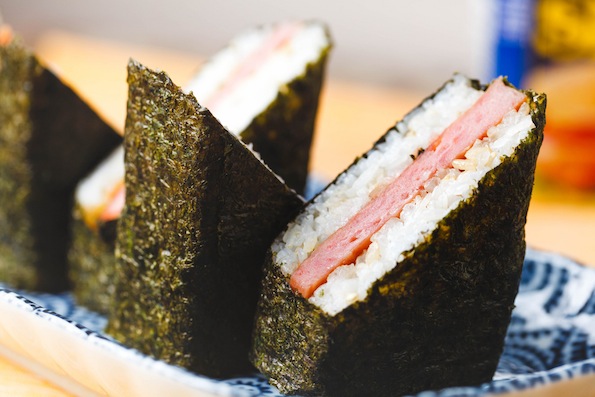Trying to find one word to describe Hawaiian food is close to impossible.
Native, international, sophisticated and fun; Hawaiian cuisine offers up a plateful of contradictions where surprise can wait in every bite.
Hawaii’s history accounts for its diversity. Of course, things started with native crops, but were quickly complimented when the Polynesian’s arrived. Later, Captain James Cook sailed to Hawaii’s shores charting a route for the Western world and its kitchen influences. The boom in sugar cane and pineapple plantations prompted a surge of migrant workers from Asia; Chinese, Japanese and Korean nationals amongst them, and when Hawaii became the 50th state of the USA fast-food was added to the mix.
In short, it was a multicultural party and everybody had bought a dish.
If you want to eat like a local in Hawaii, here’s what to try.
Loco Moco
Jumping straight in with the most weird and, arguably, wonderful: loco moco. Popular post-surf, the description of loco moco causes many to grimace as they picture white sticky rice topped with a hamburger, fried egg and…if you’re not already frowning…brown gravy.
Yes, there seems something fundamentally wrong about the yellow yolk of the egg bursting out and segueing with the gravy before collectively coloring the rice, but it’s worth getting past the visual because loco moco works. It shouldn’t, but it does – addictively so. Be warned: try loco moco once and crave it forever.
Spam Musubi
Still idling in the territory of quirky, the Hawaiian nation seems to be obsessed with Spam musubi. What is it? Well, imagine a giant piece of nigirizushi – the style of sushi that has an oblong of rice, is topped with fish and then wrapped with a strip of nori (seaweed). Except, in the case of Spam musubi, the fish is replaced with wartime favorite canned meat, Spam. Usually served hot and often eaten as street food, this local snack ticks the fun box if nothing else and deserves to be tried at least once.
Kahlua Pork
Kahlua Pork is regularly cited as the island’s favorite dish thanks to its distinctive salty and smoky flavors. Traditionally, the taste was infused into the whole pig as it sat sizzling on the heat of hot coals in an underground imu (cooking pit), today it is more common for the pork to be cooked in an oven. Either way, the meat is sublimely tender.
Kahlua pig is usually served with the ubiquitous island accompaniment of sticky white rice (two scoops, always) and cabbage. Die hard meat fans will find the side dishes a distraction because this meat is so tender and juicy it doesn’t require any backing singers.
Poke
If you like sushi, you’re going to love poke. Given Hawaii’s island status, it’s no surprise that fresh fish is a regular on the menu, but poke presents the ingredients of the surrounding ocean at their finest. Soy sauce, oil and other flavors like chili, garlic, green onion, seaweed and ginger are added to fresh cubes of raw fish to serve as a marinade. These base ingredients are proof that tasty doesn’t need to be complicated. Add two scoops of sticky white rice (noticing a theme?) and a cool bottle of the beer, and your taste buds will be in no doubt that they’ve been taken to paradise.
Poi
Poi is a taste that takes seconds to try but a lifetime to master. It is made from the root of taro, a leafy plant that is abundant in Hawaii. To make poi, the taro root is boiled and mashed and water is added to achieve the desired consistency, which can range from runny to gelatinously thick. To the newcomer, poi can taste disappointingly bland or, if left to ferment, alarmingly bitter. For this reason, it’s best eaten with strong flavored fish. You may not be a convert after tasting it, but it surely gain points for its vivid purple color?
Malasadas
If you’ve spent any time in Portugal, malasadas will be no stranger. However, the Hawaiian version of these sugarcoated donuts offer up something unique as they bust at the batter seams with flavors of the island. Mango and papaya are two of the best fruit-based centers but if you’re after a true island taste then coconut cream is the one to find. Of course, it’s necessary to try a range of flavors to make sure that you can compare them properly! Whatever you do, don’t visit Hawaii for Fat Tuesday if you have high cholesterol and low self-discipline. Known as malasadas day, locals use their excess sugar and lard in advance of Lent to cook up significant batches of these treats.
Hawaii is a not a place to get thin, but who cares when the food tastes this good?


